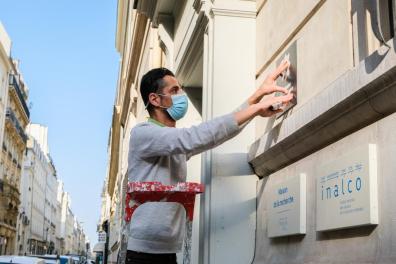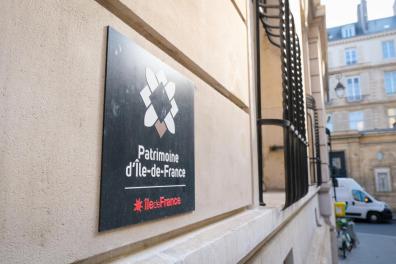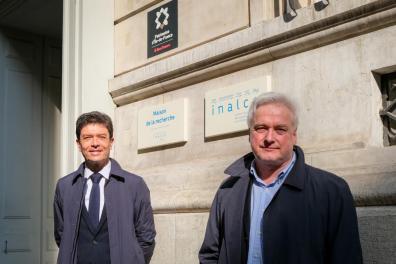Inalco's Maison de la Recherche awarded the "Heritage of Regional Interest" label

"Heritage of regional interest": a label to preserve unprotected sites
In November 2019, Inalco had responded to a call for applications in favor of unprotected heritage, to label its historic site. The building, known as the Maison de la Recherche, today houses - among other things - Inalco's research units, doctoral school and Presses. In July 2020, the building was awarded the "Heritage of Regional Interest" label by the Île-de-France Region. This label was created in 2018 to preserve sites not protected as Historic Monuments. The Maison de la Recherche is one of the label-winning sites that contribute to the quality of the Île-de-France landscape. The unveiling of the exterior plaque certifying the labeling took place on Monday, March 8, 2021, in the presence of Jean-François Huchet, President of Inalco, Peter Stockinger, Vice-President of the Scientific Council, Frosa Bouchereau, Director of the Doctoral School, Marie Vrinat-Nikolov, Director of the Presses and Philippe Advani, General Secretary of the Inalco Foundation.
A former 18th-century mansion
The mansion, located at 2 rue de Lille in Paris's 7th arrondissement, was built in 1716 by the Marquis de Bacqueville. Purchased in 1767 by Jean-Louis Bernage and restored, it became known as the Hôtel de Bernage. At the same time, the marquis Louis-Armand de la Briffe had his house built behind the hotel, taking the name of petit hôtel de la Briffe. This proximity led to the meeting and marriage of the Marquis de la Briffe and Jean-Louis Bernage's daughter. Their child inherited both buildings. From 1825 onwards, the building was occupied by a number of new tenants, until the Ecole des Langues Orientales moved in in 1873. In 1933, Inalco also acquired the adjacent building and expanded, with the final works completed in 1935. Since then, the building has undergone several renovations, the latest of which was completed in 2019.
Many heritage treasures
Today, Inalco's historic site retains some remarkable heritage features: floor mosaics, monumental grand staircase, ornate ceiling, chandeliers and ironwork in the former 2nd floor salons, a set of eight paintings and bas-reliefs. The grand staircase was designed by architect Louis Faure-Dujarric. It originally served the office of the administrator of the École des Langues Orientales, now the office of the Vice-President of Research. The stone staircase features a railing encircled by arabesques and floral motifs, ending in a large bronze candelabra. The frescoes, meanwhile, refer to the languages and civilizations that define us and are present throughout the building: mosaics on the floor in the reception area, two crescent moons - the symbol of the Orient - decorating the main vault of the staircase, and four life-size Oriental figures in bas-relief - an Indian, a Chinese, a Persian and a Turk. They represent four of the languages taught at Inalco from the outset, and were created by Laurent Marqueste in 1888.
Inalco has continued to restore the heritage features of its historic building, thanks to donors to the Fondation Inalco. The sums raised and dedicated to heritage preservation have made it possible to restore the mosaics on the ground floor, the ornate ceiling of the monumental staircase as well as its banisters and the marble surrounding the staircase, and finally the painted moldings and medallions on the ceilings of the historic salons.


